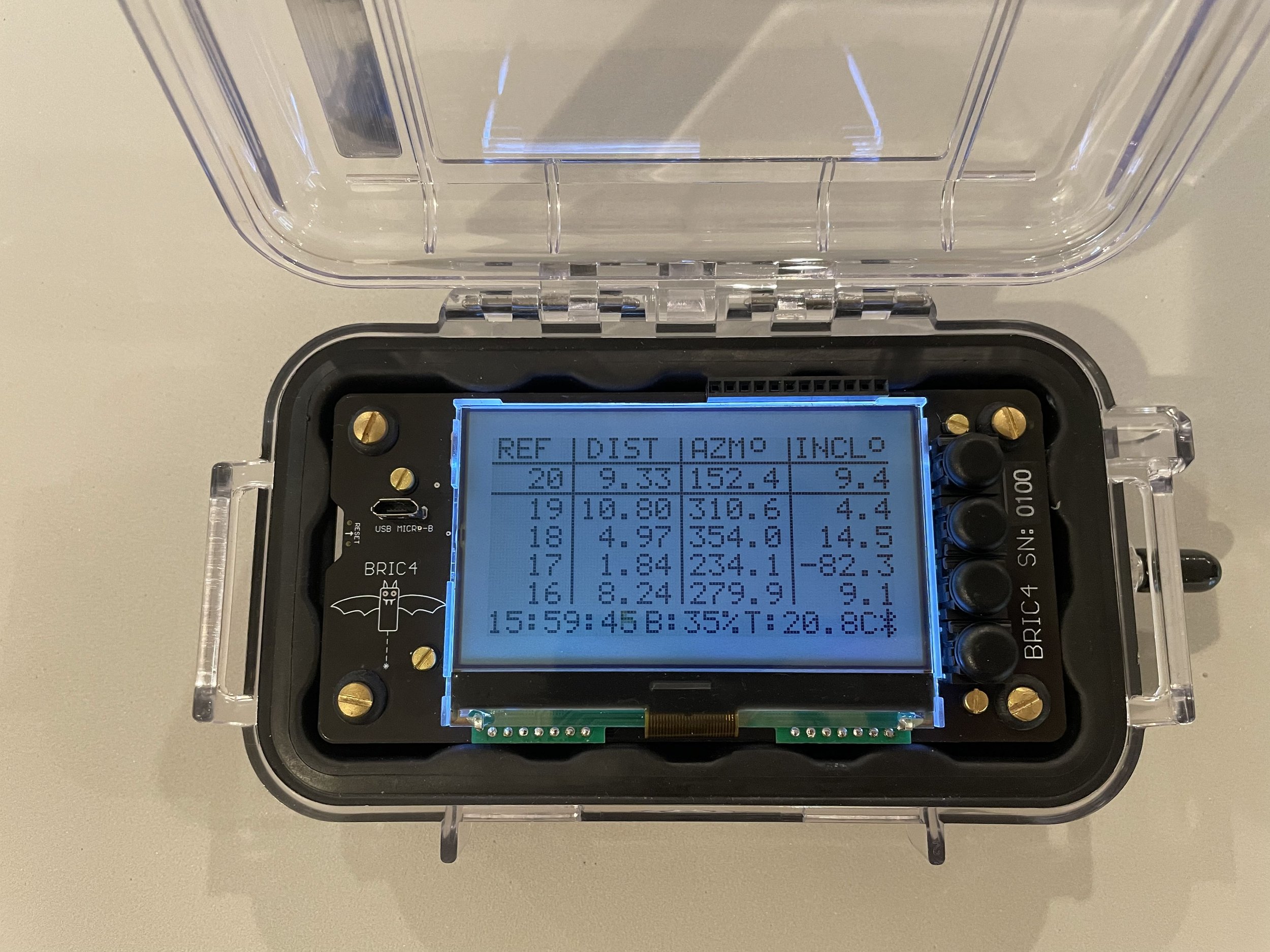About the BRIC5
The BRIC5 began production in October of 2023 and is the result of almost 13 years of off-and-on development, coding, and testing. All design, development, and fabrication is done by Kris Fausnight in Somerville, Massachusetts, USA. Sales, support, and logistics are done by John Fioroni of the Cave Exploration Society, also based in Massachusetts.
The BRIC5 had always been intended as a high-end survey tool for Grade 6 cave mapping. In the deepest and most remote reaches of exploration, there is no room for error or lack of confidence in the data that has been collected at such great effort. Durability and long battery life make this ideal for multi-week expeditions or particularly tough cave conditions.
Development History
In 2008, the Augusta Cave Masters grotto was surveying a very long mazy cave, Oaks Cave in Tennessee. We had all put in long hours surveying with the traditional Suunto Tandem but one member was able to purchase a brand new state-of-the-art Shetland Attack Pony (SAP) electronic survey tool from the UK. The SAP was one of the first electronic survey tools made for caving and it was truly revolutionary. We had a blast surveying with the SAP and knew this had to be the future. As an engineer, I was particularly interested in the hardware and how I could build one of my own.
BRIC1
The first prototype was built in 2010 and was mostly a development board to try out new sensors and collect data. It used Bosch BMA180 accelerometers, PNI MicroMag magnetometers, a PIC18F25K80 microprocessor, and a 2-line character LCD. It had no laser rangefinder but had a laser module for aiming.
BRIC2
This model was built in 2014 and was a more refined design with Freescale MMA8451Q accelerometers, PNI RM3000 magnetometers, a PIC18F46J50 microprocessor, and the same 2-line LCD. This model also lacked the laser rangefinder but had a laser module for aiming. 3 units were built with an Otterbox 1000 enclosure. The magnetometers were performing great but the accelerometers were still not accurate enough. Noise and inaccuracy in the accelerometers were affecting not only the inclination but also the azimuth since they are used for leveling the 3-axis compass.
BRIC3
The BRIC3 was a total redesign and an enormous amount of effort went into selecting the perfect components and getting as close to production intent as possible. This model included the Egismos M2 laser rangefinder module in a larger Pelican 1015 enclosure. With this extra space, a large 128x64 LCD and 4 soft-keys fit perfectly into the enclosure. The microprocessor was switched to the 32-bit Atmel ARM M0+ ATSAML21G18B which was much more powerful but still incredibly low power. The magnetometer was upgraded to the latest PNI RM3100 magneto-inductive sensors which were still the best magnetometers available. The accelerometer was upgraded to a much more expensive and physically larger Murata SCA3300 industrial accelerometer meant for low-noise leveling applications. An off-the-shelf Bluetooth Low Energy (BLE) Laird BL652 module was selected for wireless communication.
5 BRIC3 units were built in 2018 and several were sent out for field testing around the country. Countless hours went into developing and perfecting the calibration algorithms and firmware on the BRIC3.
BRIC4
The BRIC3 design turned out to be very good and no significant changes were needed for the BRIC4. A piezo-electric buzzer was added, the SD card was moved to the back, and connectors were rearranged. 50 BRIC4’s were built and the first units were sent to the developers of the cave survey software for integration (CaveSurvey, TopoDroid, Qave, & SexyTopo). Other units were sent out to various parts of the world for field testing while the firmware was polished up. In March of 2021, the BRIC4 finally went on sale on the CES website!
After the first batch of 50, some small design changes were made for the next batch of 100. The USB port was changed from USB-mini to USB-micro and the JTAG programming ports were moved to the back of the PCB. Firmware continues to be updated with new features and improvements based on testing and user feedback.
A total of 150 BRIC4 units were fabricated and are currently in use surveying around the world.




















